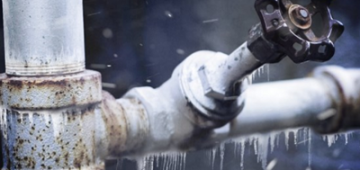On Thursday 22nd June, CET attended LV='s annual treasure hunt in aid of Family Action & Lighthouse, LV='s chosen charity.
Protecting boilers and pipes in cold weather

Take action now to protect yourself against extreme weather events.
Here are measures that you can take to help prevent boilers and water pipes from freezing, and steps to take if you find yourself with a burst or frozen pipe.
Pipes
Preventing frozen pipes
- Ensure that any outdoor pipes are insulted with pipe lagging
- Know where your main stopcock is, in the event of a burst water pipe
- Monitor the temperature of your house. If you are away, ensure that the temperature of your home is at least 10 degrees.
How to tell If your condenstate pipe has frozen
The condensate pipe is a small, usually white or grey, plastic pipe that comes out of the bottom of your boiler. In some cases, it may have been routed through the wall directly outside where your boiler is located and into an external drain or soil pipe.
The part of the pipe that is outside is most likely to freeze when temperatures start to plummet.
If the condensate pipe has frozen, you may hear gurgling noises coming from your heating system (which you wouldn't normally hear), and the boiler will shut down. This is a failsafe mechanism to protect the boiler. In some cases your boiler may show a fault code.
- Attempt to thaw the frozen pipe. For example, using a towel soaked in hot (not boiling) water.
- If a leak occurs, shut off your water supply at the stopcock and call CET.
What to do if your boiler is not working, or if your boiler pipes are frozen:
It is a simple process to defrost your condensate pipe and you shouldn’t need to call a heating engineer. If you feel confident to do so please wrap up warm and take care not to slip on the frozen ground. If your condensate pipe is not easily reached from ground level, do not put yourself at any undue risk and take any necessary precautionary methods to ensure your own safety.
- Turn the boiler off at its dedicated switch
- Go outside and look for a plastic pipe that comes out from the wall that your boiler is mounted on. If you can see the end of it, take a look to see if its frozen
- If it is frozen, try to thaw out the pipe - pour a kettles-worth of warm (not boiling) – water up and down the length of the condensate pipe. You can also use a hot water bottle or a towel soaked in warm water. Repeat as necessary to clear the ice blockage.
- Go back inside and restart the boiler (turn it on). It should start automatically. If you still get an error message, try the reset switch to reset your boiler.
- If your boiler still does not work, shows an error code/message, or shows signs of problems, call an accredited, professional heating engineer.
Preventing boiler pipe freezes
- Ensure that your water pipes are sufficiently insulated, especially those that are located outside.
- Lag the condensing pipe to insulate it from cold weather.
A lot of boiler installations use small pipework for the condensate pipe, but larger pipes (25mm+ in diameter) make it harder for the ice to block the run. When your boiler is serviced ask the engineer to make these changes for you.
24/7 Home Emergency Response from CET
We understand that home emergency is very personal. That’s why our Home Emergency Response team is comprised of highly-trained staff with a wealth of experience in emergency situations. We aim to take away your stress and deliver a resolution as quickly as possible to ensure you avoids any delays.
Get in touch for more information
